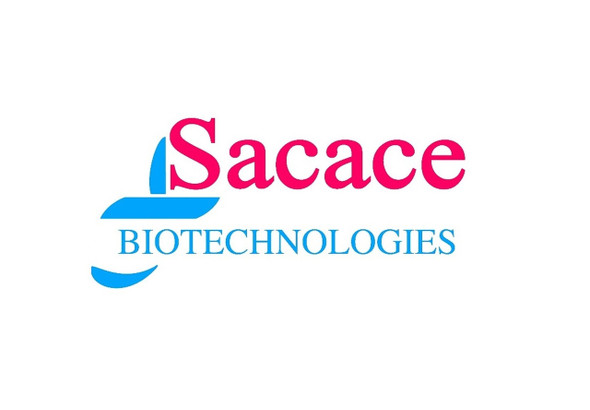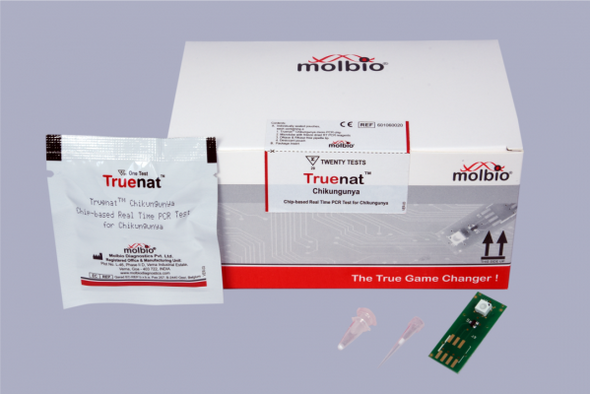Chikungunya RT-PCR (CE) | V122-96FRT
- SKU:
- 441-V122-96FRT
- Availability:
- Delivery On Request
- Test Size:
- 96
Description
Chikungunya RT-PCR | V122-96FRT from Sacace Biotechnologies is available for delivery
Real Time PCR kit for qualitative detection of Chikungunya virus in clinical material
Storage & Shipping :
Must be stored at 2-8°C.The kit can be shipped at 2-8°C but should be stored at 2-8°C immediately on receipt. .
Chikungunya RT-PCR (CE) V122-96FRT DataSheet
INTRODUCTION
Chikungunya virus (CHIKV) is a mosquito-borne virus (arbovirus) first found during an outbreak in south Tanzania in 1952. Its transmission route comes mainly from infected mosquitos of the Aedes genus, in particular Ae. aegypti and Ae. Albopictus, even if perinatal vertical transmission has been described as well. Since 1952, CHIKV caused numerous outbreaks and epidemics in Africa, Asia, Europe, the South Pacific and Americas, involving millions of people, and often separated by periods of more than 10 years.
After the bite of an infected mosquito, symptoms of disease occurs usually between 4 and 8 days but can range from 2 to 12 days. Chikungunya infection is characterised by an abrupt beginning of chills, fever reaching up to 40 °C, vomiting, nausea, headache, arthralgia (joint pain), and in some cases, maculopapular rash. Severe joint and muscular pain is also observed and is the main and the most problematic symptom of chikungunya disease. The pain is so intense that makes movement very difficult and prostrates the patients.
Laboratory diagnosis is generally made by testing serum or plasma to detect virus, viral nucleic acid, or virus-specific immunoglobulin (Ig) M and neutralizing antibodies. Viral culture may detect virus in the first 3 days of disease; however, chikungunya virus should be handled under biosafety level (BSL) 3 conditions. During the first 8 days of disease, chikungunya viral RNA can often be identified in serum. Chikungunya virus antibodies normally develop towards the end of the first week of disease. Therefore, to definitively rule out the diagnosis, convalescent-phase samples should be obtained from patients whose acute-phase samples test negative.
Because of cross-reactivity of Chikungunya antibodies with other arbovirus, the use of serology is limited and controversial, so the Real Time RT-PCR is a better detection method.
INTENDED USE
CHIKUNGUNYA Real-TM PCR kit is an in vitro nucleic acid amplification test for qualitative detection of Chikungunya virus RNA in the biological material (blood plasma, serum, urine) using real-time hybridization-fluorescence detection of amplified products. The PCR kit is used for studying the biological material, taken from the persons suspected of Chikungunya infection without distinction of form and presence of manifestation.
PRINCIPLE OF ASSAY
Chikungunya virus detection by the polymerase chain reaction (PCR) is based on the RNA extraction form the test material and subsequent simultaneous carrying out of reverse transcription reaction and amplification of Chikungunya virus cDNA fragments and Internal Control (IC) DNA with hybridization-fluorescence detection. The Internal Control allows to identify possible reaction inhibition.
The RNA obtained at the RNA extraction stage is reverse transcribed into DNA by using the Revertase enzyme, and then amplified into cDNA fragments by using specific primers and the enzyme Taq polymerase. In the real-time PCR, the amplified product is detected with the use of fluorescent dyes. These dyes are linked to oligonucleotide probes, which bind specifically to the amplified product during thermocycling. The real-time monitoring of fluorescence intensities during the real-time PCR allows the detection of accumulating product without re-opening the reaction tubes after the PCR run.
At the RT-PCR stage, 2 reactions are carried out simultaneously in one tube – amplification of the Chikungunya virus cDNA and the Internal Control (IC) DNA sequences. The amplification results of Chikungunya virus cDNA and Internal Control (IC) DNA are detected in 2 different fluorescence detection channels:
- the CHIKUNGUNYA virus cDNA is detected in the channel FAM/Green;
- the IC DNA is detected in the JOE/HEX/Yellow channel.
1 Review
-
best price
The Gentaur company has very favourable prices and the company response is very good.






